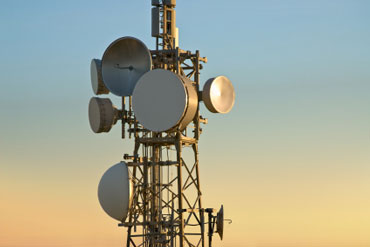February 24, 2017
The millimeter wave spectrum falls between the microwave and infrared frequencies in the 30-300 GHz range. Previously reserved for applications in military and science, the mm-Wave frequency spectrum has become available for consumer and other commercial/industrial applications including wireless backhaul for broadband and mobile applications. Continued demand in the ever-growing mobile broadband market has pushed the FCC to open up more spectrum. High resolution video streaming, mesh, wireless gigabit to the home, medical pain management, and advanced image technology for passenger screening are just a handful of additional applications using millimeter wave frequencies. Questions to consider;
- Does your network require data speeds of 1 Gbps upwards to 10 Gbps or higher?
- Is the connectivity distance less than 3 miles?
- Is the geographic area congested (i.e. urban, suburban metro or other campus-like population)?
- Is there anticipated frequency interference from applications (i.e. WiFi hotspots, SCADA, surveillance)?
- Does your application require a high predictability of performance accuracy (i.e. disaster recovery, medical)?
If you answered yes to any of the above questions, there is a millimeter wave radio link for your solution.
Millimeter wave is available in the unlicensed spectrum (57-71 GHz bands, aka V-band frequencies) and is especially appropriate when short distances and high data speeds are required. In addition, if there is an above average probability of frequency interference, millimeter wave links are available in the lightly licensed spectrum of (71-76 GHz bands and 81-86GHz bands) also called E-band frequencies.
Licensed links are becoming more popular due to the congestion and interference in unlicensed wireless spectrum. To operate a licensed microwave one must apply for a license from the FCC. Millimeter wave offers 'lightly licensed' frequency bands. A light license for a millimeter wave product is a fraction of the cost of a traditional microwave product license and can be obtained in a significantly shorter time frame.
Network planning is usually less complicated when deploying a millimeter wave radio link. Challenges associated from multipath networking are more likely with sub 6 GHz frequencies and microwave. An experienced RF engineer will calculate the link paths, investigate the probabilities of congestion and interference and design a network to achieve the desired application.
Demand is up. The millimeter wave equipment market is expected to grow at CAGR 47.34% over the 5 years 2016-2020.
For RF planning and professional services contact Direct Network Services: info@directnetserv.com or 978-952-6000.
